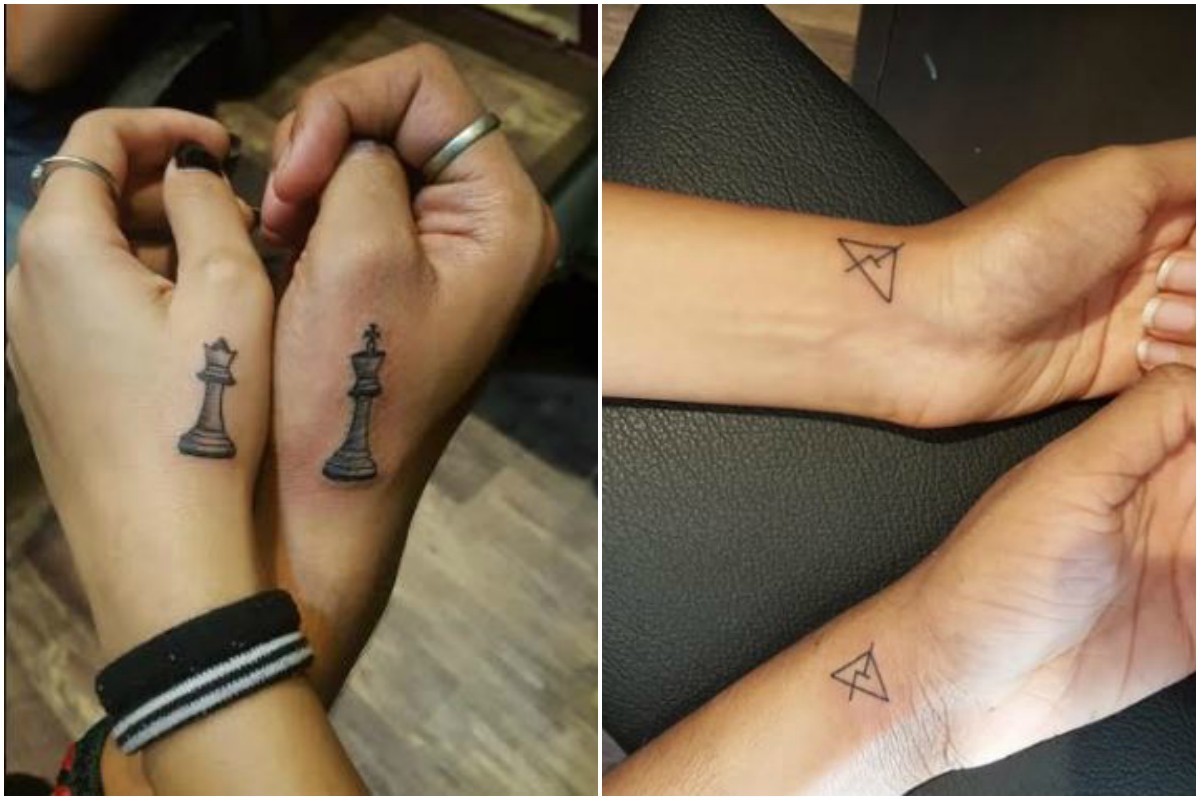India unveils maritime might with INS Surat, INS Nilgiri, INS Vagsheer on R-Day
India marked its 76th Republic Day with a grand parade down Kartavya Path, showcasing the nation's strength, self-reliance, and cultural heritage.
In today’s generation, tattoos are seen as a way people can creatively express themselves. But in India, it is also seen as a Western ideology of freedom and identity.

(SNS Photo)
In today’s generation, tattoos are seen as a way people can creatively express themselves. But in India, it is also seen as a Western ideology of freedom and identity. Even traditional tattoos in India are perceived as such.
Tattooing has existed since prehistoric times in every geographic region around the world, including India. Tattoos in India have a long history spanning several centuries. However, the specific period when they gained prominence continues to be an enigma even today.
Advertisement
Prior to the advent of technology, tattoos were created using traditional methods, involving painstakingly hand-poking each individual dot. These tattoos held significant meaning as indicators of one’s social standing, affiliation with a particular community, a symbolic transition in life, or even as a form of permanent jewellery.
Advertisement
Different tribes in India possess a rich tapestry of tattoo traditions, exhibiting distinct techniques and variations in the use of dyes. These practices vary from state to state and region to region, resulting in a diverse array of unique tattooing customs.
Many of these tattoos were created in rudimentary ways, like using a thorn or bones that were sharpened to imitate needles. The ink was also far from skin-friendly, it was created by collecting soot and mixed with supposed anti-inflammatory liquids like milk, cow urine, or breast milk.
In Gujarat, The Rabaris are an ethnic nomadic tribe that has a long-standing tradition of women getting tattoos that are called “Trajva.” It is so normalised to the point that bare skin is considered shameful. They are usually done on the forearms, face, throat, etc. The men have symbols of camels on the back of their right palms. But, they are a sign of strength since getting them is extremely painful and are super prone to infections. Scorpions and snakes are common Trajva tattoos that Rabari women get but they also consist of other motifs that are more ornamental. The village of Karavad, also in Gujarat, would make use of the green sap from a nearby plant mixed with soot for their tattoos.
In the case of most Rabari girls and women back then, getting tattooed was a rite of passage. It was one of the most painful things they’d have to endure but they considered it permanent jewellery that could never be taken away from them. Many of their tattoo symbols have a range of meanings, including representations of fertility or acquired skills that make them distinct from everyone else. Among the elderly Rabari women, they are able to distinguish the meanings of these diverse symbols and can identify their significance, however, the young girls seldom understand them. Unmarried girls can get tattoos everywhere except their legs, which are exclusively reserved only for married women.
On the other hand, the Baiga tribes residing in Madhya Pradesh would enhance their tattoo designs by applying a mixture of cow dung, turmeric, and vegetable oil. Applying these kinds of mixtures is not only unhygienic but also life-threatening!
The Konyaks, a tribe from Nagaland, practice exclusive tattooing on men. Upon reaching adulthood, boys undergo tattooing as a symbol of their transition into manhood. However, prior to this ritual, young men must prove their eligibility by capturing at least one head from an enemy village. The tattooing process is carried out exclusively by the chief’s wife, who comes from a prestigious aristocratic lineage. The tattoos are typically applied on the face, and if the pain can be endured, they may also extend to the neck and chest.
All of these traditions began to gradually fade away over time. Historians claim it was either due to colonisation or urbanisation of the country. However, some traditional tattoo art is still being kept alive by some individuals but in safer and more hygienic ways. Many incorporate traditional tattoo designs and get them customised, giving them a modern spin that blends traditional and contemporary styles of tattooing.
A mandala is a geometric and symbolic design that holds spiritual significance in various cultures, particularly in Hinduism and Buddhism. These tattoos typically feature a circular pattern with intricate geometric shapes, symbols, and details. The design may be symmetrical or asymmetrical, and it can be customized to include various colours, sizes, and styles. Mandala tattoos are popular for their aesthetic appeal and spiritual symbolism, representing balance, harmony, and unity. People choose mandala tattoos as a way to express their personal journey, and inner peace, or to commemorate significant life events.
The good news is that traditional tattoos have not fully lost their appeal. The designs that were used in the past have been preserved and passed on to future generations. Tattoo design options are much more innovative than they were in the past, giving people the liberty to create designs that align with their inner selves. Nowadays, any and all designs can be created on a whim; be it a traditional pattern or a big, intricate piece. State-of-the-art tattoo machines are used so the lines are crisper and more refined, as compared to traditional tattooing methods. Tattoo technology has also progressed tenfold, which aids artists to create tattoos that aren’t prone to blowout, increasing their longevity. The ink used in modern tattooing practices is hypoallergenic and does not cause any sort of long-term illnesses. One reason for getting tattoos that stood the test of time is that they have and always will be ornamental and beauty-enhancing since people proudly ink what they find appealing for aesthetic purposes.
(Sunny Bhanushali is the Founder and CEO of Aliens Tattoo)
Advertisement